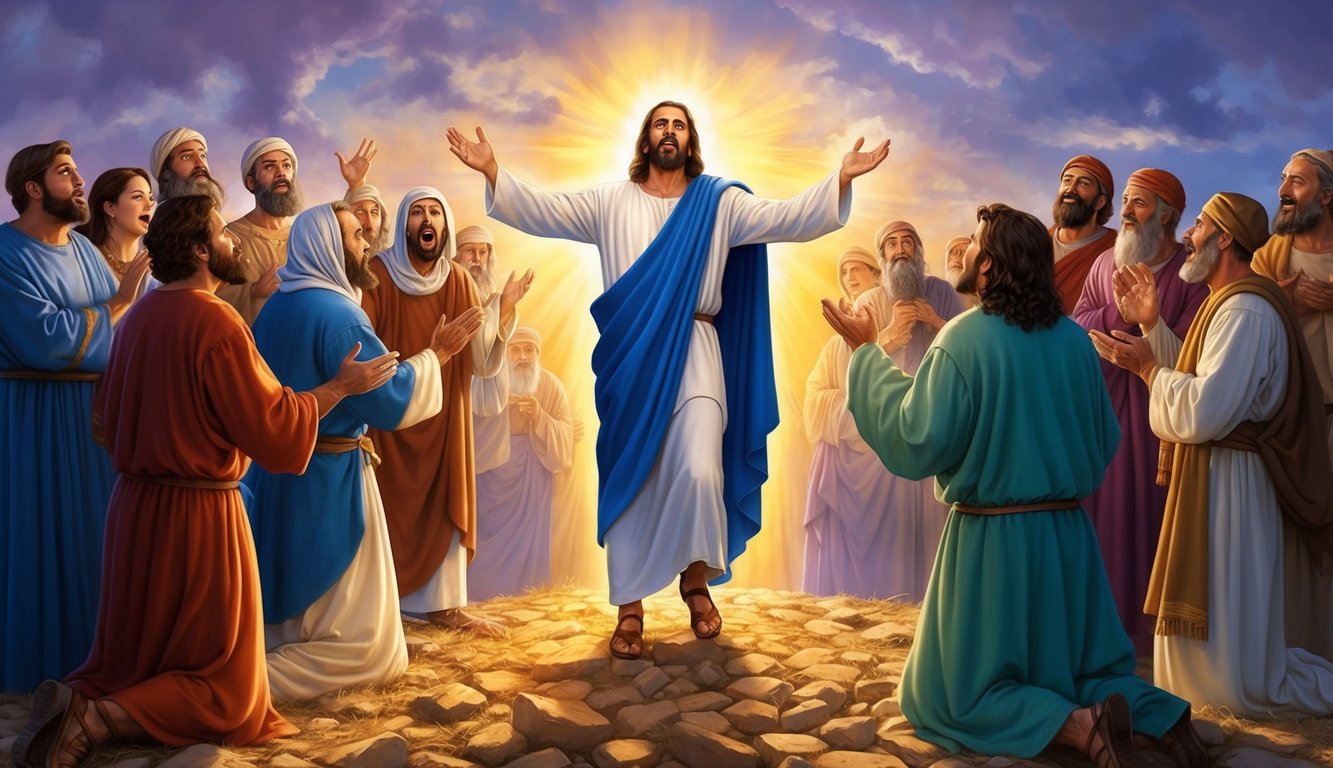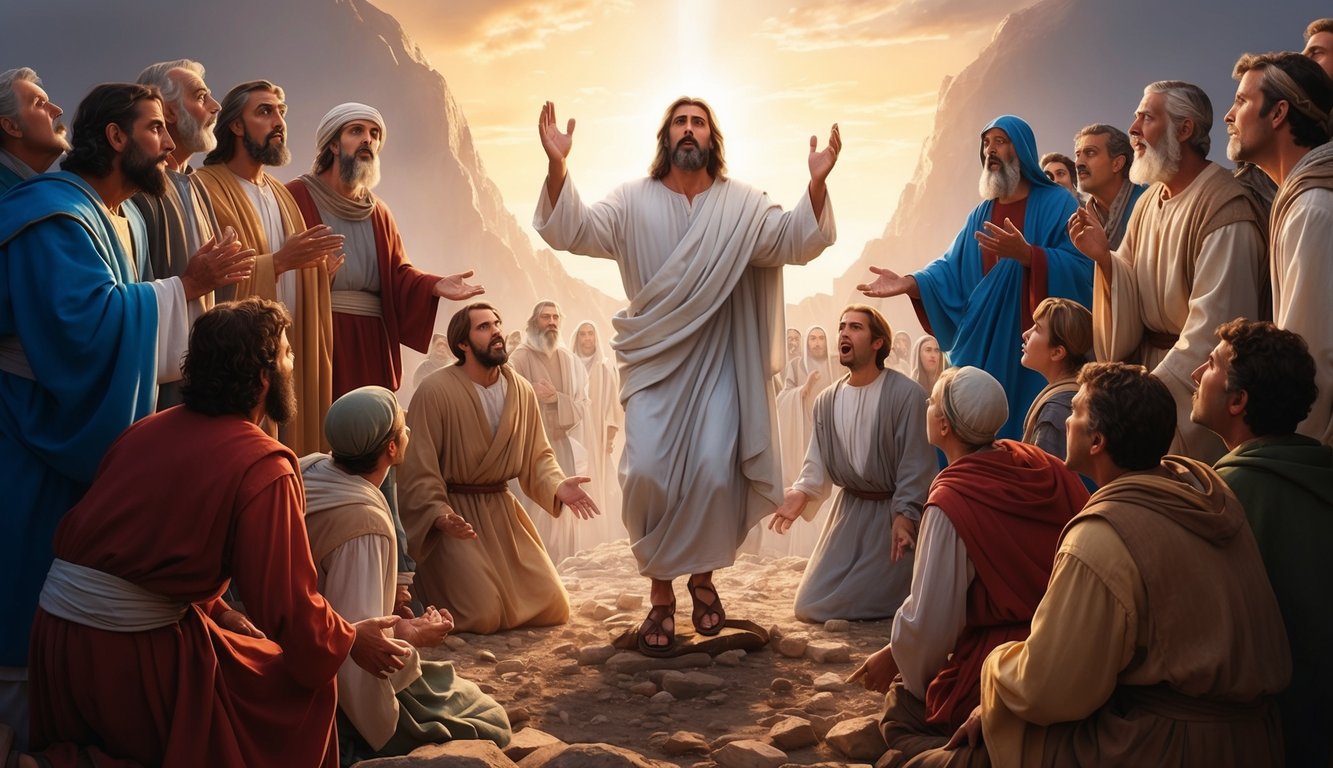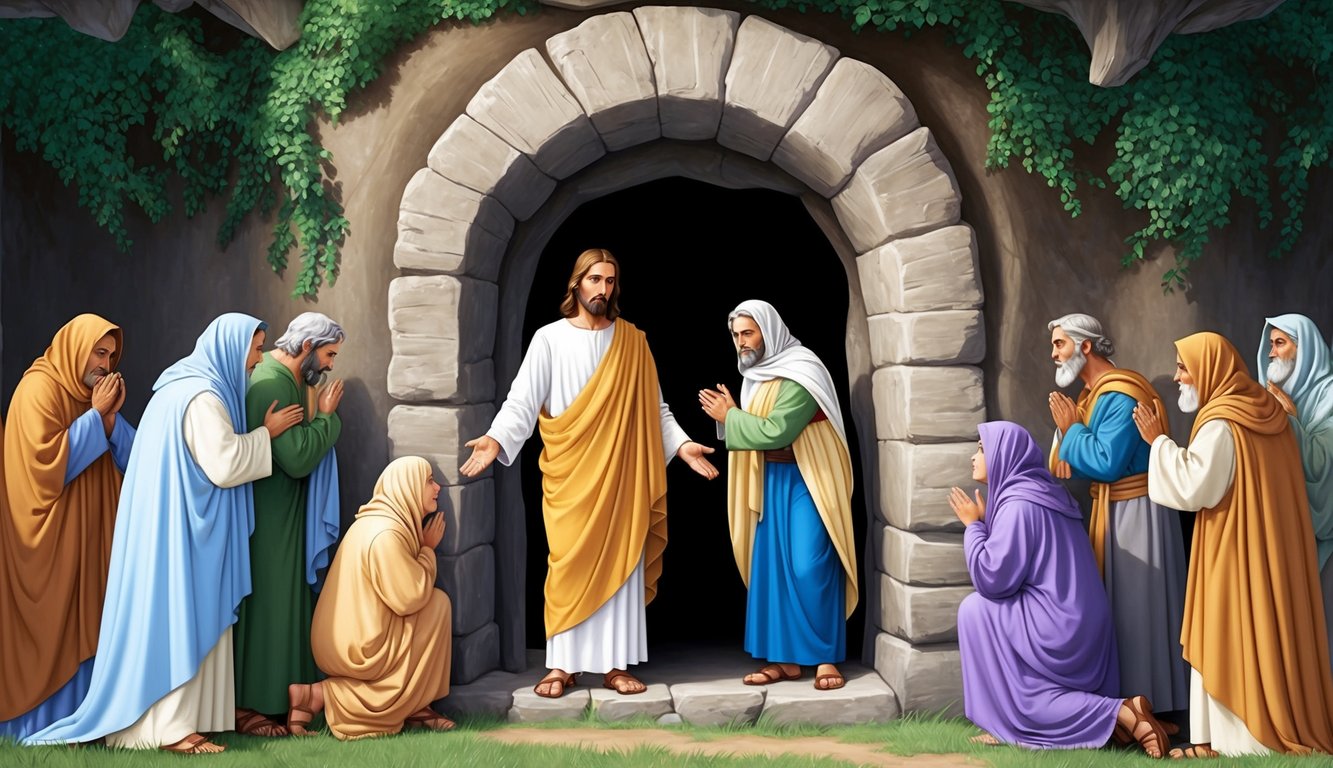Don’t Miss Out On This Unique Astrological Opportunity
Are you tired of spinning your wheels and getting nowhere? Simply put, you’re out of sync: you’re out of alignment with your astral configuration.
But: there’s a kind of map that can help you reclaim your alignment. Think of it as your own personal blueprint to success and happiness: a blueprint that will help you live your most amazing life.
Get started here.
Curious about who Lazarus is in the Bible? You’re about to embark on a journey through one of the New Testament’s fascinating stories woven into the life of Jesus. Lazarus, a beloved friend of Jesus, is known for being raised from the dead by Christ, a powerful testament to faith and divine power.
Your interest might lead you to explore how this miraculous resurrection is depicted in the Book of John, capturing both the emotions and the awe of the witnesses.
This event not only shows Jesus’s deep compassion but also highlights His power over life and death.
Engaging with this story can deepen your understanding of the Christian faith and its teachings.
Explore the connections between Lazarus and biblical teachings.
You may find yourself captivated by the lessons that resonate even today.
In this reflection, you might gain new insights into themes of faith, friendship, and the profound belief in eternal life.
So, are you ready to dive into this remarkable narrative?
Lazarus and His Resurrection
The story of Lazarus showcases a powerful demonstration of faith and divine intervention, highlighting both the humanity and divinity of Jesus.
It involves themes of life, death, and belief, and ultimately reveals the glory of God.
The Miracle in Bethany
In the village of Bethany, Lazarus fell seriously ill.
His sisters, Mary and Martha, sent for Jesus, hoping he could save their brother.
When Jesus finally arrived, Lazarus had been in the tomb for four days.
Despite this, Jesus ordered the stone to be moved from the tomb.
With a prayer to God, he called Lazarus to come out.
Remarkably, Lazarus emerged from the tomb, raised from the dead.
This miracle astonished the witnesses and affirmed Jesus’s power over death and life, reinforcing their faith and belief in him.
You can read more about this event in the Gospel of John.
Significance of the Event
Lazarus’s resurrection served as a pivotal moment in Jesus’s ministry.
It not only demonstrated his authority over life and death but also foreshadowed his own resurrection.
For Mary and Martha, it was a reaffirmation of faith in Jesus’s promise of eternal life.
For many witnesses, it was a profound moment that encouraged belief and trust in Jesus.
The event also intensified opposition from the authorities who felt threatened by this public display of power.
The resurrection became a catalyst leading to further tension and plotting against Jesus, ultimately leading to his crucifixion.
This act illustrated the glory of God and the deeper meaning of belief in eternal life.
Key Characters and Relationships
In the story of Lazarus in the Bible, the relationships among characters reveal themes of love, faith, and belief.
These connections provide a deeper look at the significance of the miracle of raising Lazarus.
Lazarus, Mary, and Martha
Lazarus, along with his sisters Mary and Martha, lived in Bethany.
This family is known for their close relationship with Jesus.
When Lazarus fell ill, Mary and Martha sent word to Jesus, hoping for a miracle.
Their actions show their deep faith in his power.
Mary is remembered for anointing Jesus with perfume and wiping his feet with her hair.
This act of devotion illustrates her deep love and respect for Jesus.
Martha, on the other hand, is more practical.
She demonstrates faith by acknowledging Jesus as the Son of God, even before her brother’s resurrection.
Both sisters express grief when Lazarus dies, each showing different aspects of faith and emotion related to Jesus’ friendship and divine power.
Jesus, the Compassionate Friend
Jesus’ relationship with Lazarus is marked by deep friendship, showcased through his tears at Lazarus’ tomb.
His compassion for the grieving sisters and the sorrow of losing a friend highlights his humanity.
Despite being the Son of God, he shows genuine emotions, revealing the depth of his love.
His miracle of raising Lazarus becomes a powerful sign of his divine authority.
By calling out to his Father, he demonstrates reliance on God and highlights the presence of divine power.
Jesus’ compassion serves as a powerful reminder of his role as both friend and savior.
The Reactions of the Disciples and the Jews
The disciples’ reactions vary, with some showing hesitation about returning to Judea for fear of danger.
Their concern highlights the tension in following Jesus.
Despite this, their loyalty is evident when Thomas encourages them to follow, even at the risk of their own lives.
Some Jews who witnessed the miracle of Lazarus respond with belief, acknowledging Jesus as the Son of God.
However, others feel threatened and take steps to report the event, fearing the implications of Jesus’ growing influence.
These mixed reactions highlight the complex social and religious dynamics at play during that time.
Theological Implications

In exploring the story of Lazarus, focus on key themes such as resurrection and Christ’s authority.
These ideas emphasize essential aspects of faith and understanding Jesus’s role in Christian theology.
Resurrection and the Life
When Jesus raises Lazarus from the dead, he shows his power over life and death, highlighting the central belief in the resurrection.
According to the Bible, an important moment is when Jesus declares, “I am the resurrection and the life.”
This statement emphasizes that faith in Jesus leads to eternal life.
It underlines the promise that believers will experience life beyond death, assuring you of hope and future glory with God.
This assurance encourages Christians to persevere through trials, knowing that their ultimate reward is with God.
By living by faith not sight, believers trust in His promises even when circumstances seem uncertain.
This unwavering faith strengthens their relationship with God and fills them with peace and confidence in His eternal plan.
The story of Lazarus acts as a sign of Jesus’s divine mission, indicating that death does not have the final word.
This event strengthens the belief in the resurrection as a cornerstone of Christian faith.
Christ’s Divinity and Authority
Lazarus’s story also illustrates Christ’s divinity and authority.
When Jesus performs this miracle, it isn’t just about compassion but demonstrating his divine nature as the Son of God.
It shows his connection to God’s glory and reveals him as the Messiah who possesses unique authority over life.
Jesus’s actions in raising Lazarus are a powerful sign that you can believe in his divine power and purpose.
This reinforces the idea that Jesus is not just a prophet but holds an active role in God’s plan.
His authority extends to commanding life and death, supporting Christian teachings that Jesus is central to salvation and divine revelation.
Lazarus in Parables and Teachings

Lazarus appears in a famous parable illustrating themes like wealth, poverty, and eternal destiny.
It contrasts the lives and fates of a rich man and a poor beggar named Lazarus.
The Parable of the Rich Man and Lazarus
In the Parable of the Rich Man and Lazarus, a rich man lives lavishly, while Lazarus, a beggar, resides outside his gate, hoping for scraps.
Their fortunes are reversed after death.
Lazarus rests in comfort with Abraham, while the rich man suffers in Hades.
He seeks relief, asking Abraham to send Lazarus to ease his agony with water.
Abraham explains that a great chasm separates them, preventing passage.
The rich man then requests Lazarus be sent to warn his brothers, but Abraham replies that they have Moses and the Prophets to guide them.
This parable emphasizes the urgency of repentance and listening to divine teachings, as well as the consequences of ignoring them.
It highlights the theme of justice in the afterlife, showing that ignoring the poor and pursuing only good things in life may lead to torment and separation from heavenly comforts.
Lazarus’s Impact on Jesus’ Ministry

The story of Lazarus plays a significant role in the events leading up to Jesus’ crucifixion.
His resurrection sparked both belief and hostility, heavily influencing the actions of the religious leaders and the people.
Journey to the Cross
When Jesus raised Lazarus from the dead, it was a pivotal moment that stirred deep reactions.
Many people began to believe in Jesus as a result, viewing him as the Messiah.
This miracle showcased Jesus’ power over life and death, which drew large crowds to him.
This event also troubled the religious leaders.
The chief priests and Pharisees, fearing the growing influence of Jesus, called a meeting of the Sanhedrin.
Caiaphas, the high priest, suggested it was better for one man to die than for the whole nation to suffer.
This perspective represented a turning point, effectively setting the stage for Jesus’ arrest and crucifixion.
Widespread Belief and Opposition
Lazarus’s resurrection also created a division among the people.
Many began to follow Jesus with renewed faith, convinced by the miracles they witnessed.
This growing popularity worried the religious authorities.
They feared losing their influence over the Jewish nation.
The miracle prompted them to plot against Jesus more earnestly, seeing him as a threat to their power.
The raising of Lazarus happened near the Passover, a time when many Jews gathered in Jerusalem.
Jesus’ actions spread quickly, amplifying both belief in him and the urgency from the priests and Pharisees to find a way to arrest him.
This tension highlighted the conflicting emotions around Jesus’ ministry, ultimately leading to a decisive moment in the biblical narrative.



